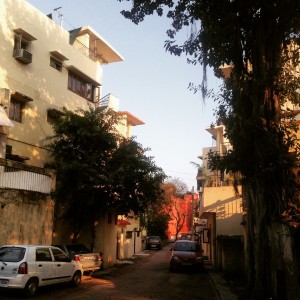On Facebook today, somebody I went to high school with posted this article about GM Crops with the caption “An important perspective from a lifelong environmentalist putting the scientific consensus on GMOs in the context of that on climate change.” I intended to write just a quick response pointing out the holes in the author’s argument but, it turns out I have a lot to say about GMOs. Writing this response helped me flush out why exactly I think the use of genetically modified crops are problematic for our food system. Thanks Facebook (haha)!
My response:
This article provides an interesting perspective. I also consider myself an environmentalist and have thought a lot about the possibility for positive change with the help of GM crops. For me though, I always some back to the fact that GM seeds are developed and owned (which in itself is problematic) by large (evil) multinational corporations. For me there is eedo way around the fact that the corporate control of agriculture is bad for farmers, for consumers and for the environment. There are two major points that I think the author of this article fails to address in this piece:
First of all, it’s important to remember that the “necessity” for GM crops was created because of the global shift towards an industrial model of agriculture. The problems we’re seeing with pests, soil degradation and even water shortages are symptomatic of large scale, monocultural, corporately controlled agriculture. Before the Green Revolution smaller, diversified and largely organic cropping systems worked in tandem with nature and weren’t plagued by the same diseases, pest and water problems we see on modern industrial farms. GM crops are essentially large corporations’ answer to the problems they themselves have caused and – surprise, surprise – yet another opportunity to make money at the expense of marginalized farmers. While the brinjal seeds may be “free” for some lucky farmers in Bangladesh at this point, in the long run, shifting away from traditional seed saving can be extremely costly for farmers. Most GM seeds are non-renewable meaning the input costs for farmers rise significantly because new seeds must be purchased each year. Furthermore, if farmers stop saving their seeds and stop growing locally adapted, native and traditional crop species, we are likely to lose not only biological diversity in farming regions but also cultural diversity. It’s important to remember that farming is an ecological AND social system and even from an environmentalist’s perspective, we can’t forget that food and culture go hand in hand.
Secondly, I am no expert on Bt brinjal in particular, but I know that for most GM crops (Bt. cotton, corn) the genetic modification does not in fact reduce pesticide use. These crops are often “Roundup ready” and the sale of seeds goes hand in hand with the sale of the pesticides to which they are resistant. In India, when farmers switch to growing GM crops, Monsanto generously gives them the chemicals for free the first year. (Isn’t that nice?) In subsequent years however, farmers are crippled by the immense cost of paying for seeds and chemicals on which they have become dependent. Conveniently, both the chemicals and the seeds are produced by the same corporation (i.e. Monsanto). It’s a brilliant business plan! In India at least, farmers across the country are being plunged into great debt and in many regions, farmer suicides have become endemic.
Definitely, if used properly, I think from an environmental perspective there is a possibility for GMOs to assist us in our fight to mitigate climate change and reduce the environmental impacts of agriculture. However, GMOs in their current state as the intellectual property of huge money hungry companies don’t. Also, despite this author’s claims there is actually much dissent in the scientific community as to their safety. And, let’s be honest; as a technology they are a fairly recent development so let’s be careful about heralding them as any sort of saviour just yet. I am also a student of science and agree that “science advocacy” is important. I do also think however that sometimes scientists fall victim to a reductionist thought process. I believe a more holistic approach to issues like GMOs is important to fostering a more sustainable future for food. We need to consider the context in which GMOs are being introduced into our farming systems and discuss their implications environmentally, socially and economically.
